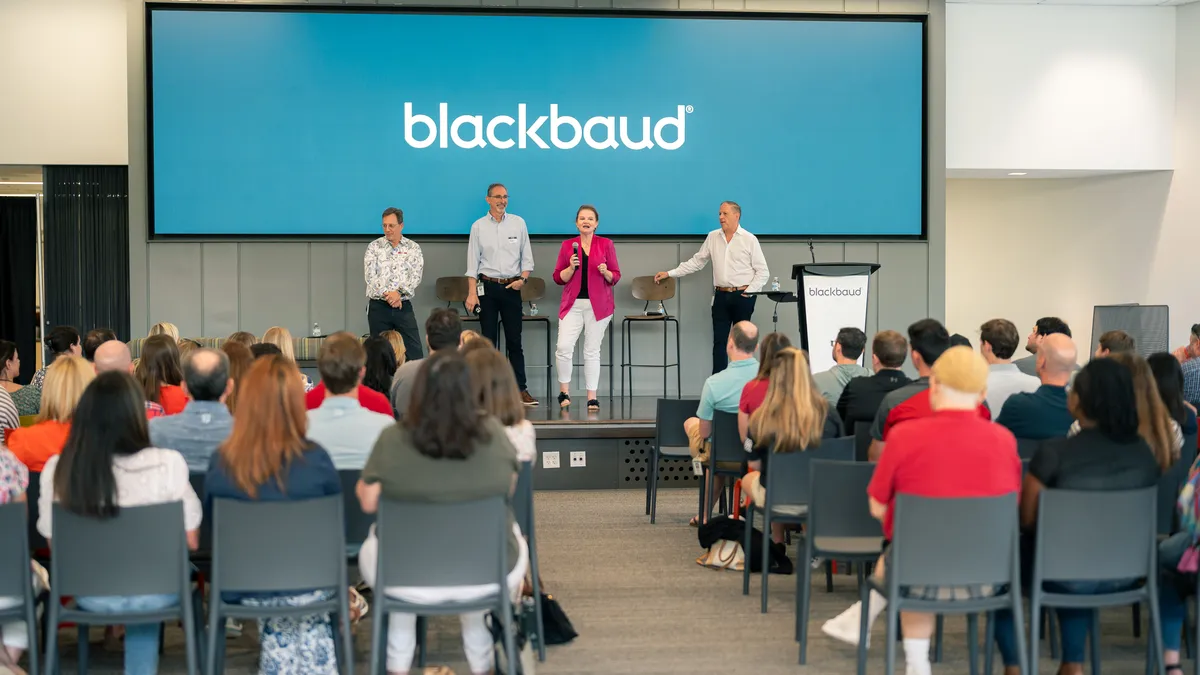As a tech company, Blackbaud was prepared to become remote when the COVID-19 pandemic sent workers into lockdown in March 2020, Margaret Driscoll, the company’s chief people and culture officer, told HR Dive.
“When we sent our employees home, that first Monday people turned their computers on, then got to work,” Driscoll said.
Long an in-person company, Blackbaud pivoted, and its leaders were impressed by workers’ high levels of productivity. They did employee surveys and held focus groups to determine how to move forward, at first questioning whether to operate as an in-person or hybrid operation.
“Early discussions were to talk about adding in more flexibility. We didn’t come out of the gates, ‘Oh, we’re going to be remote-first,’” Driscoll said.
Like many other companies, the offices were only closed briefly, before workers were given the option to come in wearing masks, physically distancing and getting temperature checks, Driscoll said. But there was never a mandate to return.
From early on, the software company launched a weekly meeting with its people leaders, about a team of 200 employees, that served as a touch point and a way to keep those with director-level-plus titles in communication, she said.
“Four years later, we still have that same half hour meeting,” Driscoll said. “We really look to make sure we're curating the right information, the right data, to help and support our people leaders in a remote-first environment with content that they can also continue to share with their people and their teams.”
It moved in-person new hire orientations virtual, learning over time how to balance video calls with off-camera team support and training, Driscoll said.
The company officially became remote-first in November 2021.
Now, Blackbaud’s 3,000 employees have the option to use the corporate headquarters in Charleston, South Carolina, for team meetings, and workers and leaders periodically meet for regional connection gatherings near where they live.
“We’re sitting at tables engaging and really talking about whatever these employees want to talk about. First, it’s those employees getting to meet the leaders of the company. But more importantly, it’s our employees getting to meet each other face-to-face,” Driscoll said. What we’ve done is really been intentional about creating more human connections, not around a physical corporate headquarters, but around where our employees live and work now.”
The company now recruits based on position and talent and “no longer focus[es] on ZIP code,” which opens positions up to more candidates, Driscoll said.
“We continue to learn every day. Most important is to be open and transparent with the employee population. Ask them what they’re looking for and what they need to be successful,” Driscoll advised. “Be willing to hear the answers.”














